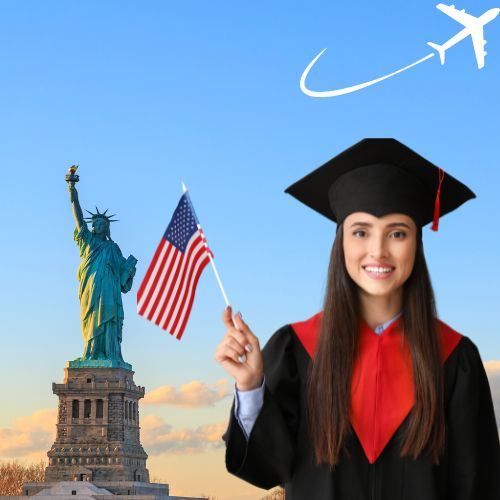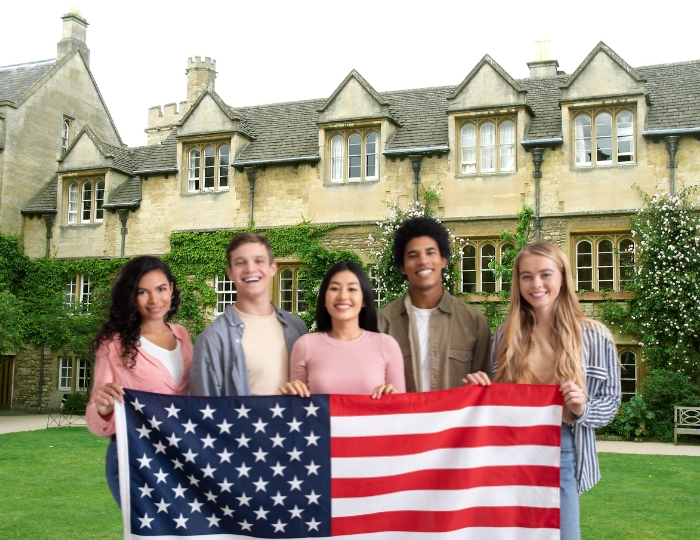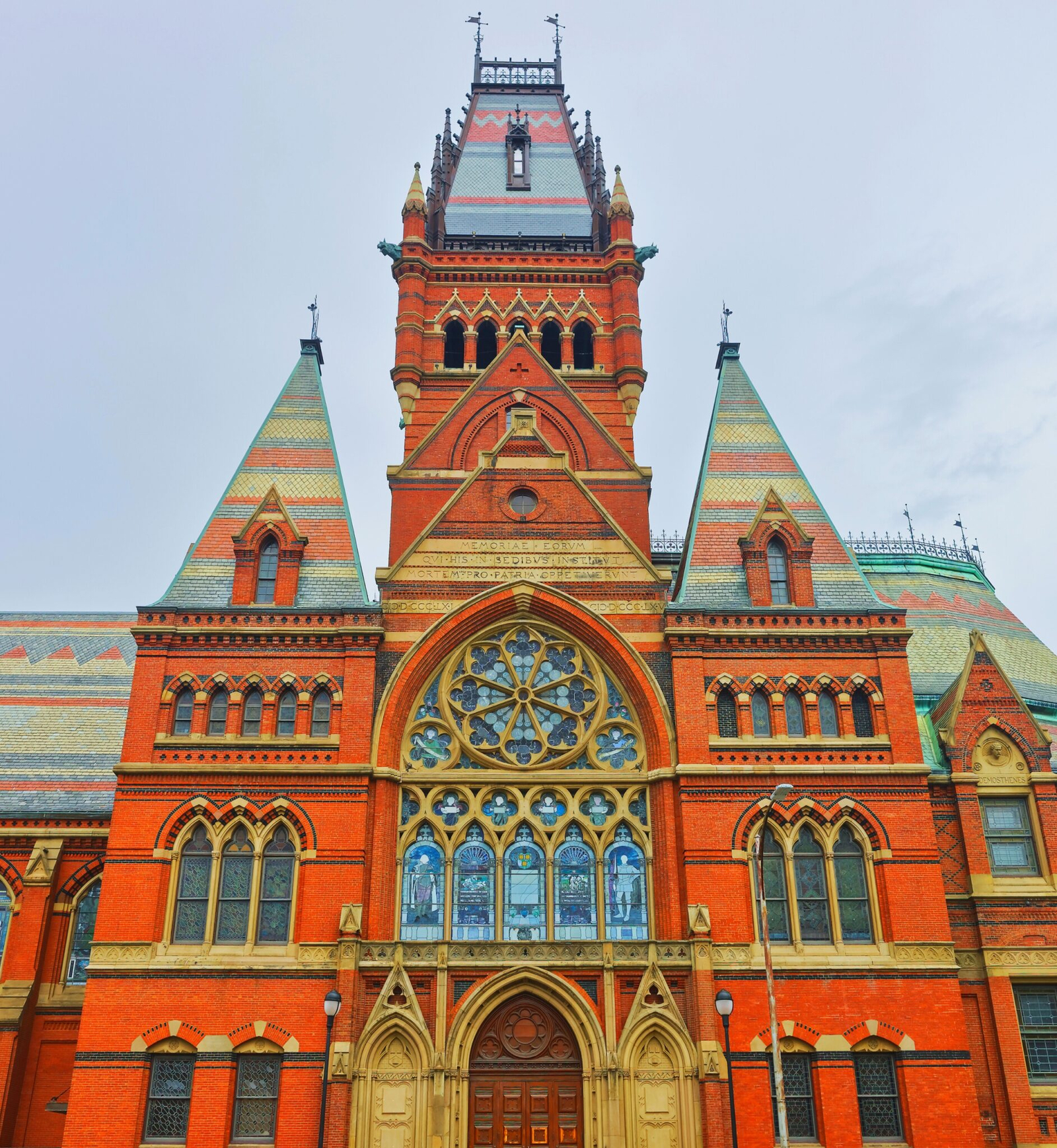Let's shine your future together with Meiji Education
Learn More to Be More Successful:
Study in USA From Bangladesh


Unleash Your Potential
Explore Top-Level Education in USA
Imagine being a global citizen and studying in the best universities in the world also with high scholarships. Yes, the USA provides these opportunities together where you don’t have to choose between quality education, lifestyle and reasonable tuition fees. Meiji Education is here to help your dream come true.
study In USA
Why should you study in USA
- World-Class Education: Opportunity to get into the best Universities worldwide and get internationally accepted degrees.
- Diverse Course Offerings: They offer countless programs and specializations, so you’re not limited to the choice.
- Cutting-Edge Research Opportunities: Participate in highly specialized research and or technology.
- Cultural Diversity: Get an exposure of the students based on the cultural diversities of the world.
- Career Opportunities: Increase employment opportunities and relationships with international businesses.
- Personal Growth: Provide for the growth of the student’s independence, critical thinking skills, and understanding of the world.
- Scholarships and Financial Aid: The options available to finance their studies internationally.

Education In USA
How to Study in USA
Requirements:
Academic Qualifications: An educational qualification required for admission is a high school diploma, undergraduate, master’s, or doctoral degree.
Standardized Tests: Undergraduate applicants should take the SAT or ACT, while postgraduate applicants should take the GRE or GMAT.
English Proficiency: Take TOEFL or IELTS scores in the application form.
Financial Proof: Evidence of income source to pay tuition fees and other expenses.
Valid Passport: A passport must be valid for at least six months from the intended exit date from the given country.
Personal Statement/Essay: An essay explaining the reasons to study in the USA.
Process:
- Research Programs and Universities: Choose a program at an institute in the USA.
- Prepare for Standardized Tests: SAT/ACT for American Universities, GRE/GMAT for graduate programs, and TOEFL/IELTS for international students.
- Apply to Universities: Submit the transcripts, test scores, essays, and recommendations, then proceed to apply to several universities.
- Receive Acceptance Letters: All you have to do is wait for the admissions decision and select the University you are most comfortable with.
- Apply for a Student Visa (F-1): If you’ve received your I-20, apply for an F-1 visa at your nearest U.S. Embassy or Consulate.
- Attend Visa Interview: Another preparation for the visa interview is to ensure that you have all the required documents, such as financial proof, passport, and I-20.
Begin Your Studies: When your visa is successful, arrange transport and travel to the USA.

For Any Inquery: (𝟖𝟖𝟎) 𝟏𝟗𝟎𝟐𝟖𝟎𝟒𝟖𝟎𝟒
By submitting my data I agree to be contacted
Top Universities in USA
- Massachusetts Institute of Technology (MIT) (QS Ranking: 1)
Leading in innovation, technology, and engineering with an emphasis on research.
- Stanford University (QS Ranking: 5)
Popular for venture culture and reputed connections with Silicon Valley.
- Harvard University (QS Ranking: 4)
It boasts of having one of the best academic performances and students who are prominent leaders across the globe.
- California Institute of Technology (Caltech) (QS Ranking: 6)
Superior in science and engineering and research-oriented.
- University of Chicago (QS Ranking: 11)
Most famous for its academically demanding courses and research areas within economics and the social sciences.
- University of Pennsylvania (QS Ranking: 12)
Leading with a focus on business, law, and medical sciences for interdisciplinary programs.
- Princeton University (QS Ranking: 16)
It is notably recognized for its first-rate undergraduate courses and research in humanities and sciences.
- Yale University (QS Ranking: 14)
It is especially famous for its law school and emphasis on liberal arts.
- Columbia University (QS Ranking: 19)
Well known for its international research focus and journalism and business schools.
- University of California, Berkeley (UC Berkeley) (QS Ranking:10)
Focusing on public research, particularly in science, engineering, and technology.

Understanding Your Cost Breakdown
Tuition Fees:
Undergraduate Programs:
Public Universities: $20,000 – $40,000 per year
Private Universities: $30,000 – $60,000 per year
Graduate Programs:
Public Universities: $20,000 – $45,000 per year
Private Universities: $30,000 – $70,000 per year
Living Expenses:
Accommodation: $10,000 – $15,000 per year (on-campus or off-campus housing)
Food: $3,000 – $5,000 per year
Transportation: $1,000 – $2,000 per year (varies by location)
Personal Expenses: $2,000 – $4,000 per year
Health Insurance:
Health Insurance: $1,000 – $2,000 per year (required for all students)
Miscellaneous Fees:
Student Fees: $1,000 – $2,000 per year (can include technology fees, activity fees, etc.)
Visa Application Fees: $160 (plus SEVIS fee of $350)
These figures provide a general estimate; always check specific universities for precise costs.

For Any Inquery: (𝟖𝟖𝟎) 𝟏𝟗𝟎𝟐𝟖𝟎𝟒𝟖𝟎𝟒
By submitting my data I agree to be contacted
How Does Meiji Education Help You to Achieve Your Dreams?
The USA has the most excellent higher education facilities. If you need a consulting agency to study there, you can contact Meiji Education as one of your choices. In a way, this service has been provided competently and honestly by Meiji Education for quite some time now. Amidst this, many students from Bangladesh were sent to the USA by Meiji Education. However, please read our students’ comments regarding their experiences and learning here.
Still Have Question?
For entry requirements, you will require a passport, academic credential, standard test scores such as the SAT, GRE, TOEFL, proof of finance, and a student visa- F-1.
This includes criteria such as field of study, location, tuition fees, scholarships available for international students, and the university's ranking. .
Some familiar standardized tests are the SAT/ACT for undergraduate students, GRE/GMAT for postgraduate students, and TOEFL/IELTS for testing English proficiency.
The I-20 is a document you acquire when you are a university student in the United States. It is the form you need to apply for an F—I student visa.
After getting your I-20, you go to www. ds-160. State. Gov, fill out the form online, pay for your SEVIS and visa application fees, and arrange for an interview at the nearest U.S. Embassy or consulate.
Other expenses include tuition fees and living expenses, which range from $35,000 to $75,000 per year, depending on the university and country of study.
Most universities today provide merit-based scholarships and scholarships from external institutions such as Fulbright and the Rotary Foundation.
F-1 visa holders can work on-campus up to 20 hours weekly during school and full-time during vacations.
OPT, and CPT is the two types of training that enable international students to work in the USA about their programs of study while studying or after completing the course.
If available, one can reside in university or college hostels or look for subsidized accommodation like a flat, a rented house, or a host family. Most colleges provide services to get ideas on where to live.
Of course, they must obtain health insurance as a condition for admission for the international student. Some universities provide their schemes, and other private schemes are available for purchase.
It is advised to take English language classes or lessons, converse with native English speakers, or use English language learning mobile applications. Some universities also have pre-sessional English programs.
YYes, your spouse and children may also apply for an F-2 dependent visa to come with you. They can dwell with you, but F-2 visa holders have no right to work.
Most undergraduate degree programs in the USA span four years.
Master’s degree programs may take 1-2 years, while PhD degree programs may take 4-6 years or more.
The application papers should be submitted 12 – 18 months before the intended date of joining the university since admission deadlines differ.
Organize transcript, recommendation, and essay collections; take necessary exams; attend campus tours; and complete University applications either through websites or common application sites.
To provide the distinction, the state funds public universities in Arizona, and thus, the tuition fee is comparatively less for state residents. In contrast, private organizations fund private universities in Arizona, and the tuition fee is high.
Such institutions provide two-year associate degrees and certificates. They are cheaper and can also offer a student with a ticket to a four-year university.
Yes, you can apply for post-graduation placement, which can take up to 12 months of work placement in the USA. Most STEM graduates can apply for an additional 24 months of OPT.
Lease expenses depend on the place, but the common ones will include housing, meals, transport, and miscellaneous charges. It is recommended that you are willing to spend $15000—$25000 per year.
You will need to open a student account by going to the local bank with your passport, visa, I-20 form, and proof of address.
The academic year generally runs from August/September through May/June and is divided into two semesters. Some universities also conduct Summer and Winter Sessions for the students.
Explore university-offered scholarships, external organizations, and the available list of reputed scholarship search engines—complete individual applications for the scholarships, including writings and letters of recommendation.
The majority of universities employ the Letter Grading system, which includes A, B, C, … down to F, and GPA is calculated on a 4. 0 scale.
There are universities that accept students who transfer from other institutions. Sometimes, you will be required to provide certain documents, such as transcripts and course descriptions, for assessment.
The universities provide services such as academic advising, career counseling, health care, housing, and cultural orientations.
Look through your financial papers, state your aims and objectives concisely, and rehearse the answers to questions about your choice of university and your plans.
